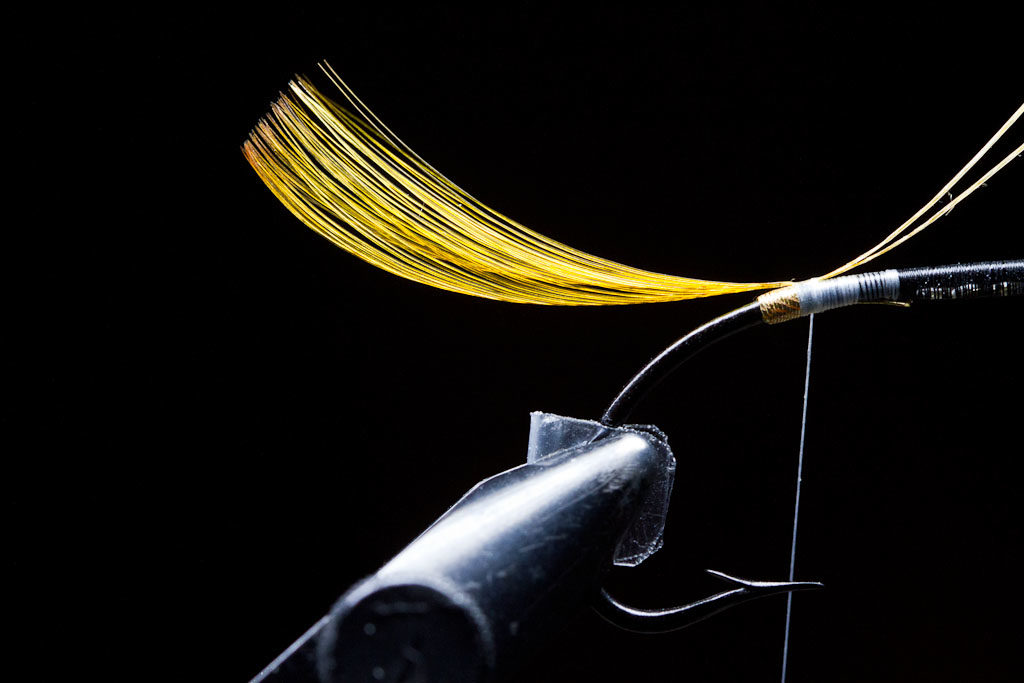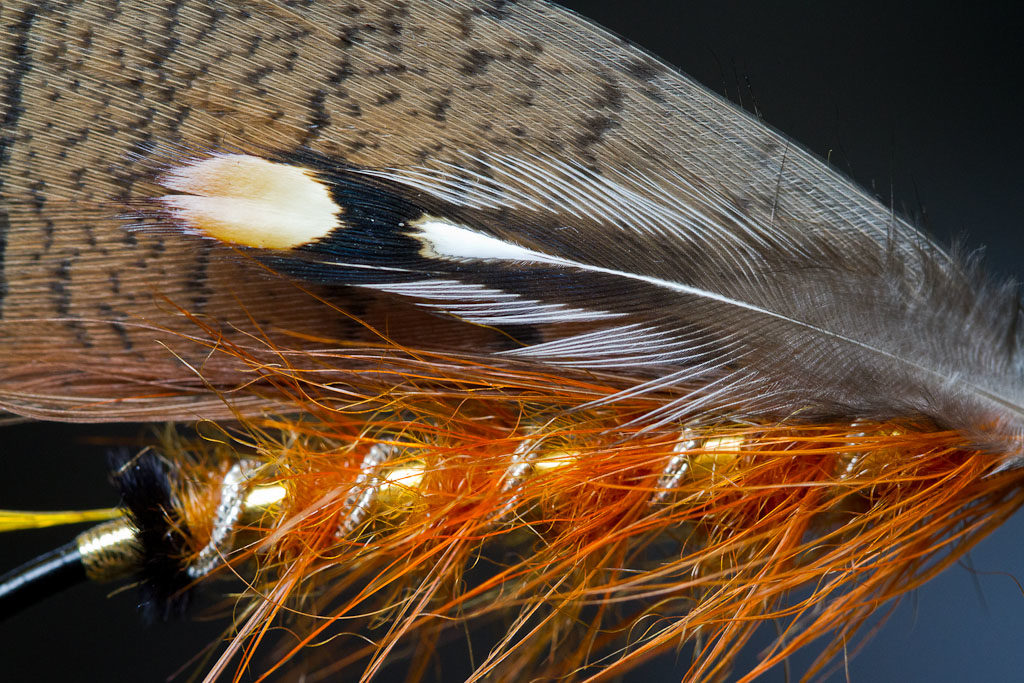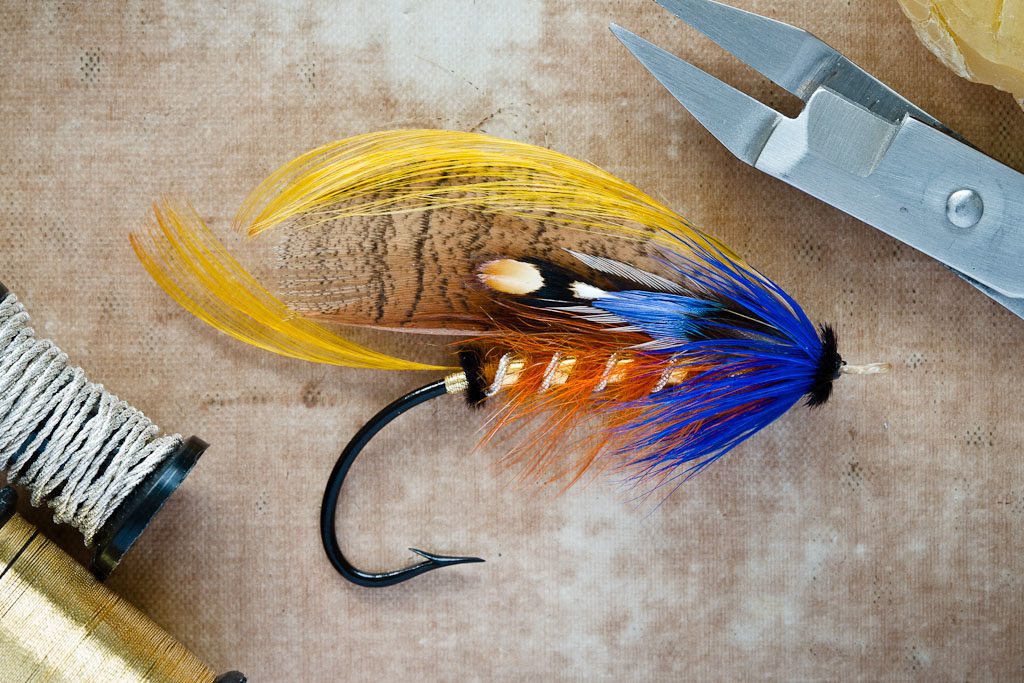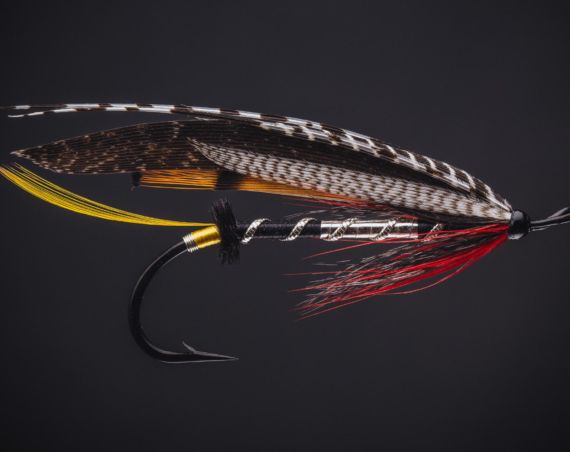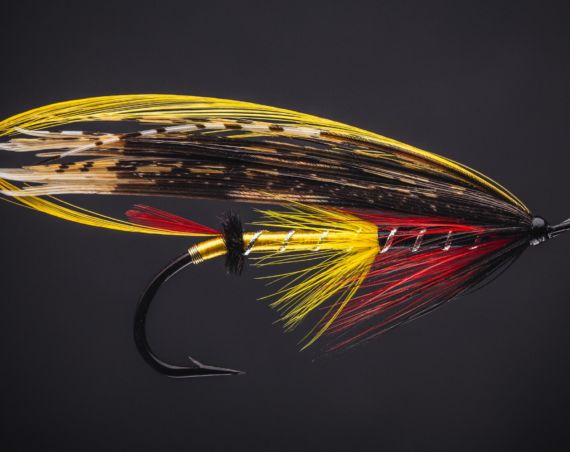The Britannia
Rare pattern because the wing is made of feathers from the Northern Shoveler duck. The fly itself must have been pretty popular since there are vintage versions of it left today and the pattern was in three major books of the Victorian era.
This is a mix of the patterns from Francis Francis, Kelson and Ephemera. The hook I used is a 5/0 Britannia from Ronn Lucas Sr.. The hook profile is taken from a vintage Britannia fly featured in Paul Schmookler’s Rare and Unusual Fly Tying Materials vol.1. I also opted for a more cinnamon color body and a dirty orange hackle to keep it looking more vintage.
It’s quite simple tie and straightforward pattern but the main wing itself is rather difficult to attach. The rachis of the Shoveler feathers is flat like in more commonly used Wood Duck. With a careful use of good pliers (like the Veniards de-barb pliers shown in the picture) you can flatten the rachis and after that the feathers will sit properly on top of the hook.
I added couple step by step photos to show you another use for the pliers. The double tail is something I find that people struggle with quite a lot. But again it’s all about preparation. First of all the crests must be a perfect match. You will then flatten the tie-in point and tie them one by one straight on top of the hookshank and on top of each other. Make sure you use tight wraps and a little bit of wax on your thread so that they don’t slide sideways. If you try this without flattening the stems with pliers you will never get them perfectly straight. The feather on top has to be tied a bit shorter usually to match the cascade of the first feather.
Here’s the original pattern and notes this time from Ephemera’s The Book of the Salmon. Mine is closest to Kelson’s pattern but I find this one a bit more intriguing. I divided it in section to make it a bit clearer but as you can see they didn’t bother to list the materials on order those days.
No.2. TheBritannia.
Body, orange pig’s hair, ribbed with gold and silver twist
tag, black ostrich harl
over the body a scarlet or blood-red hackle and a purple one at and above the shoulder
two toppings for tail
wings, two shovel-duck feathers, four toppings, a blue chatterer’s feather each side, and outside and a little under them some silver pheasant tail-feather
small black head.
Hook, No. 4. and 5.
This fly in large rivers, or in those in which fish take large flies, I consider the best of all general flies known to me. I do not think large salmon will refuse it in any river in the world, when water is high and slightly discoloured by recent floods. As Britannia is the ruler of the waves, this name-sake of hers is a ruler of the waters.


